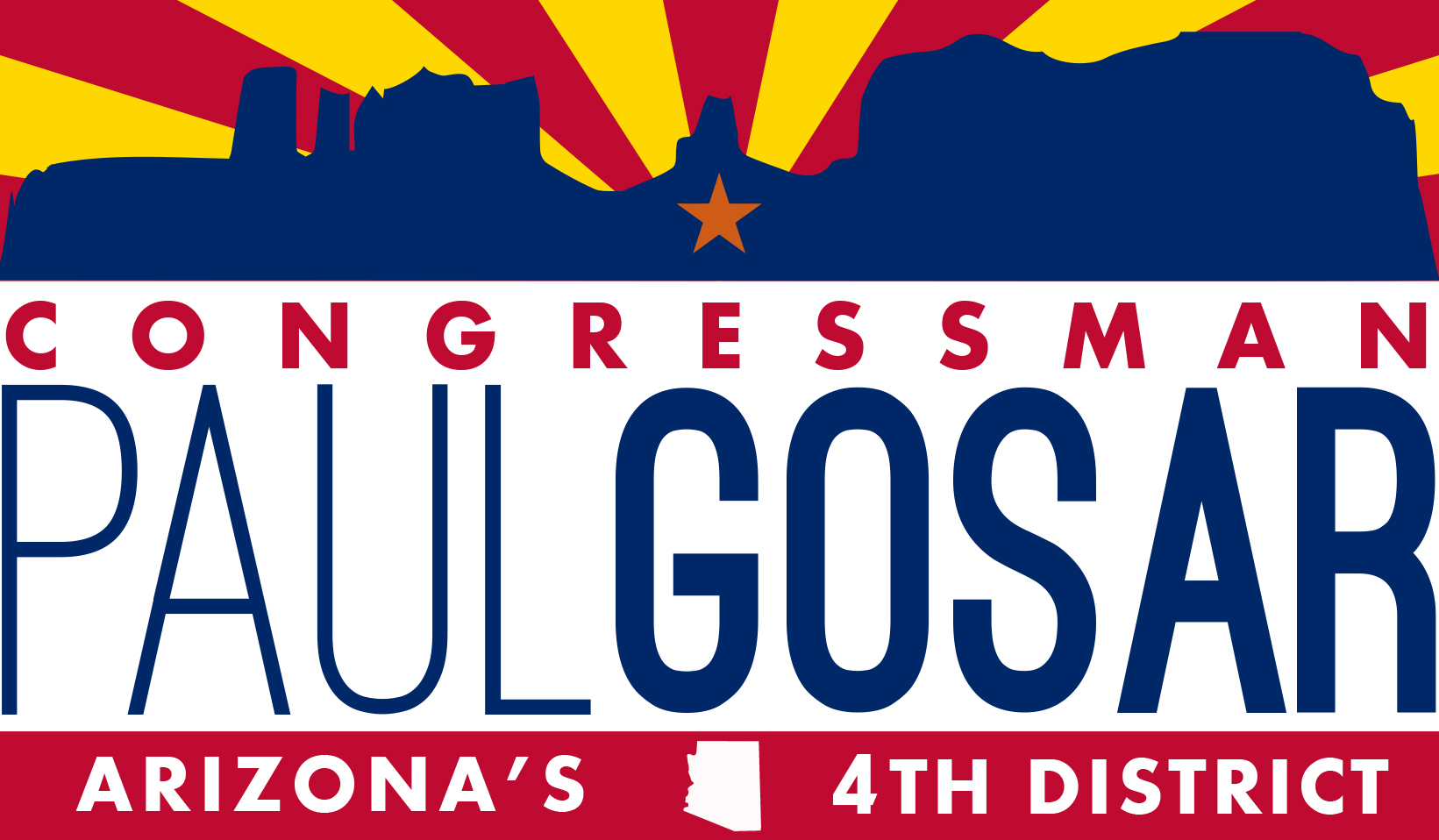|
Today, U.S. Congressman Paul A. Gosar, D.D.S. (AZ-04) released the following statement after introducing H.R. 1869, the Environmental Compliance Cost Transparency Act, which requires federal agencies active in the wholesale power business to disclose the costs of environmental compliance to their customers:
“Federal projects like the Hoover Dam have been producing affordable and reliable electricity for millions of customers for nearly 80 years. Hydropower is a clean and renewable source of energy that is carbon free and provides low-cost electricity. Unfortunately, in too many instances throughout the country extremist environmentalist policies are hindering renewable energy sources, like hydropower, and making them less affordable.
“For far too long, the high cost of burdensome federal environmental policies has been hidden from the public. American energy consumers deserve to know how much environmental policies are costing them on their electrical bills. We need to restore some balance and commonsense to this country. When empowered with all the relevant information and given a choice between extremist environmental policies and renewable energy sources, I am confident that Americans will play a bigger role in choosing the best course for our energy future.”
In 2011, Colorado River Energy Distributors Association Executive Director Leslie James testified in support of similar legislation saying, “It is our understanding that this information is readily available and can be provided at little or no incremental cost to the agencies.”
The Arizona Westside Irrigation and Electrical Districts, an informal coalition of twelve agricultural districts, strongly supports this legislation stating, “The environmental compliance costs to operate those dams are significant, and because our districts are publicly-owned, the costs are borne directly by our customers - and your constituents.”
Joe Kay, representing the Grand Canyon State Electrical Cooperative Association Inc, lent his support to H.R. 1869 adding, “[Your legislation] will strengthen transparency and government management by providing electric co-op consumers with critical financial information related to the direct and indirect costs of federal agencies.”
Background
The full text of the Environmental Compliance Cost Transparency Act can be found HERE.
Rep. Gosar’s legislation does not repeal or change a single environmental law; it simply requires much needed transparency that is long overdue.
The fifteen original cosponsors that joined Rep. Gosar in introducing H.R. 1869 include: Reps. Mark Amodei, Rod Blum, John Duncan, Trent Franks, Walter Jones, Doug Lamborn, Mia Love, Blaine Luetkemeyer, Cynthia Lummis, Tom McClintock, Dan Newhouse, Randy Neugebauer, Steve Pearce, Chris Stewart and Ryan Zinke.
The Environmental Compliance Cost Transparency Act is endorsed by: the Colorado River Energy Distributors Association, Grand Canyon State Electric Cooperative Association, Arizona Westside Irrigation and Electrical Districts and Irrigation & Electrical Districts’ Association of Arizona and the Agribusiness and Water Council of Arizona.
Specifically, the Environmental Compliance Cost Transparency Act requires the agencies, known as the Power Marketing Administrations (PMAs), responsible for marketing and delivering power from federal projects like the Hoover Dam, to provide each customer a list of direct and indirect cost estimates associated with environmental compliance in their monthly electricity bills. Direct costs associated with compliance include costs related to environmental studies, capital, operations, maintenance, and staffing. Indirect costs would include forgone generation and replacement power costs.
Examples of costly environmental policies that drive up electricity costs include:
· A 1996 new agency operating requirement cut hydropower generation at the Glen Canyon Dam by one-third and has cost customers more than $50 million annually.
· Associated costs for environmental compliance for hydroelectric operations in the Pacific Northwest exceed more than $500 million annually.
###

|

